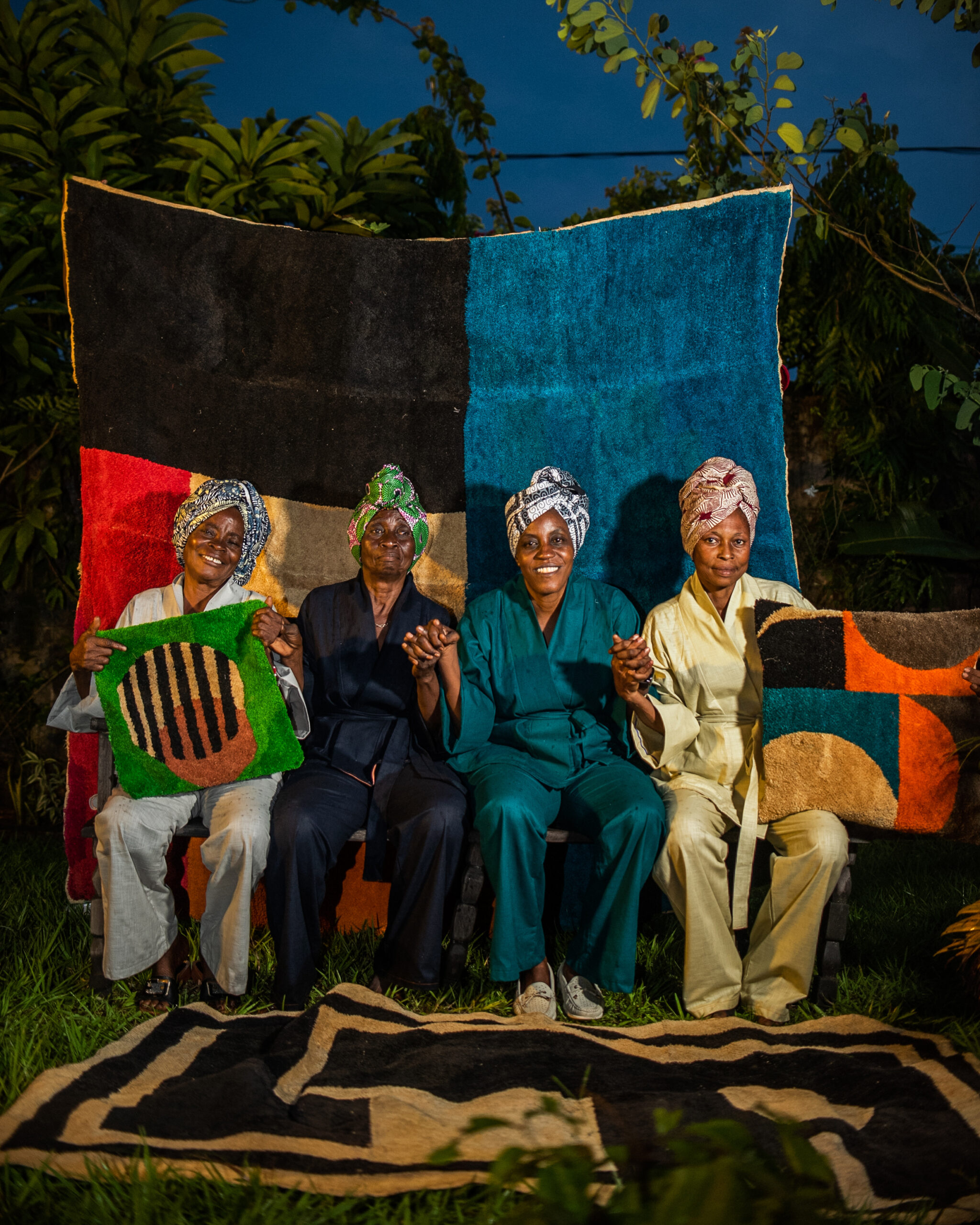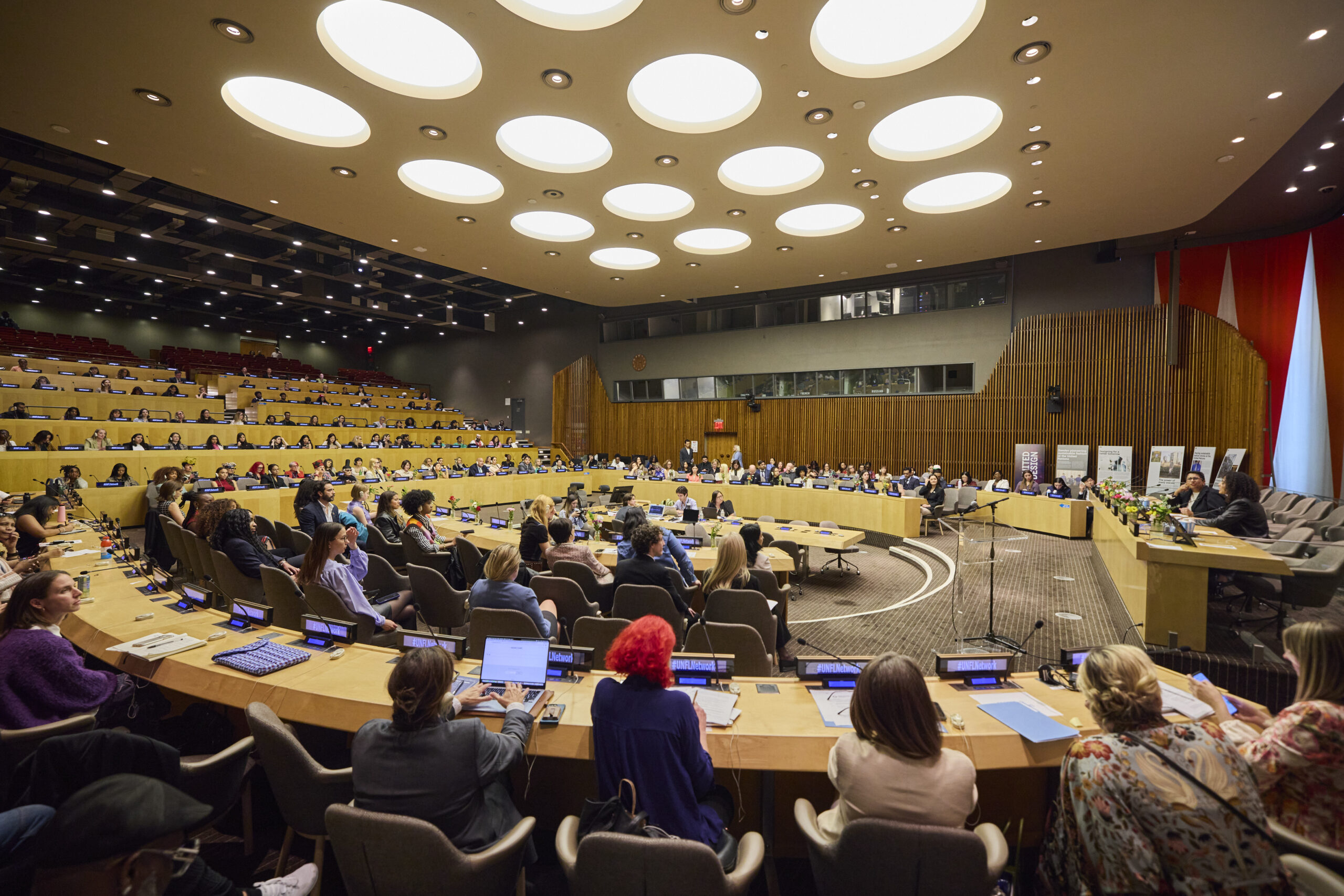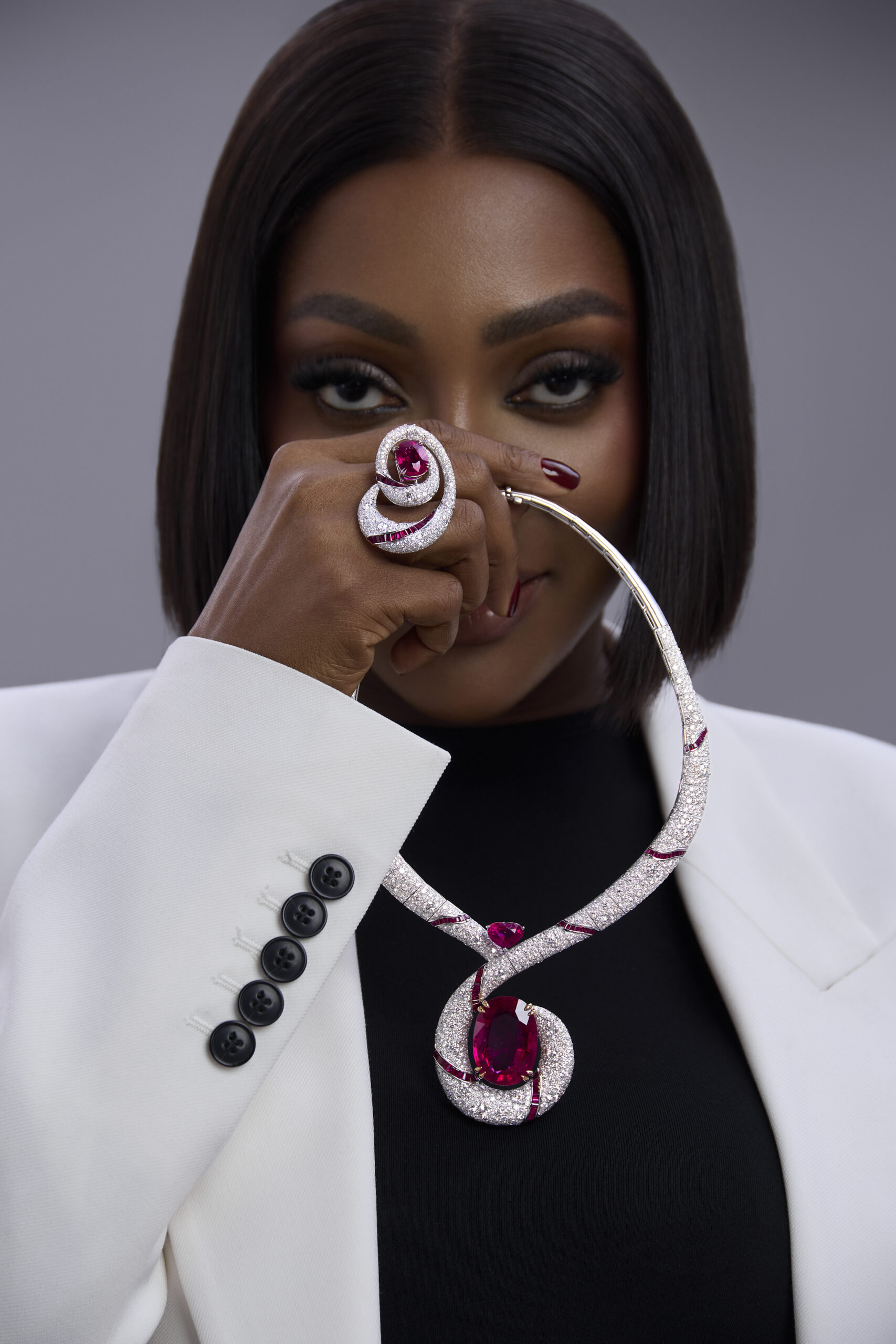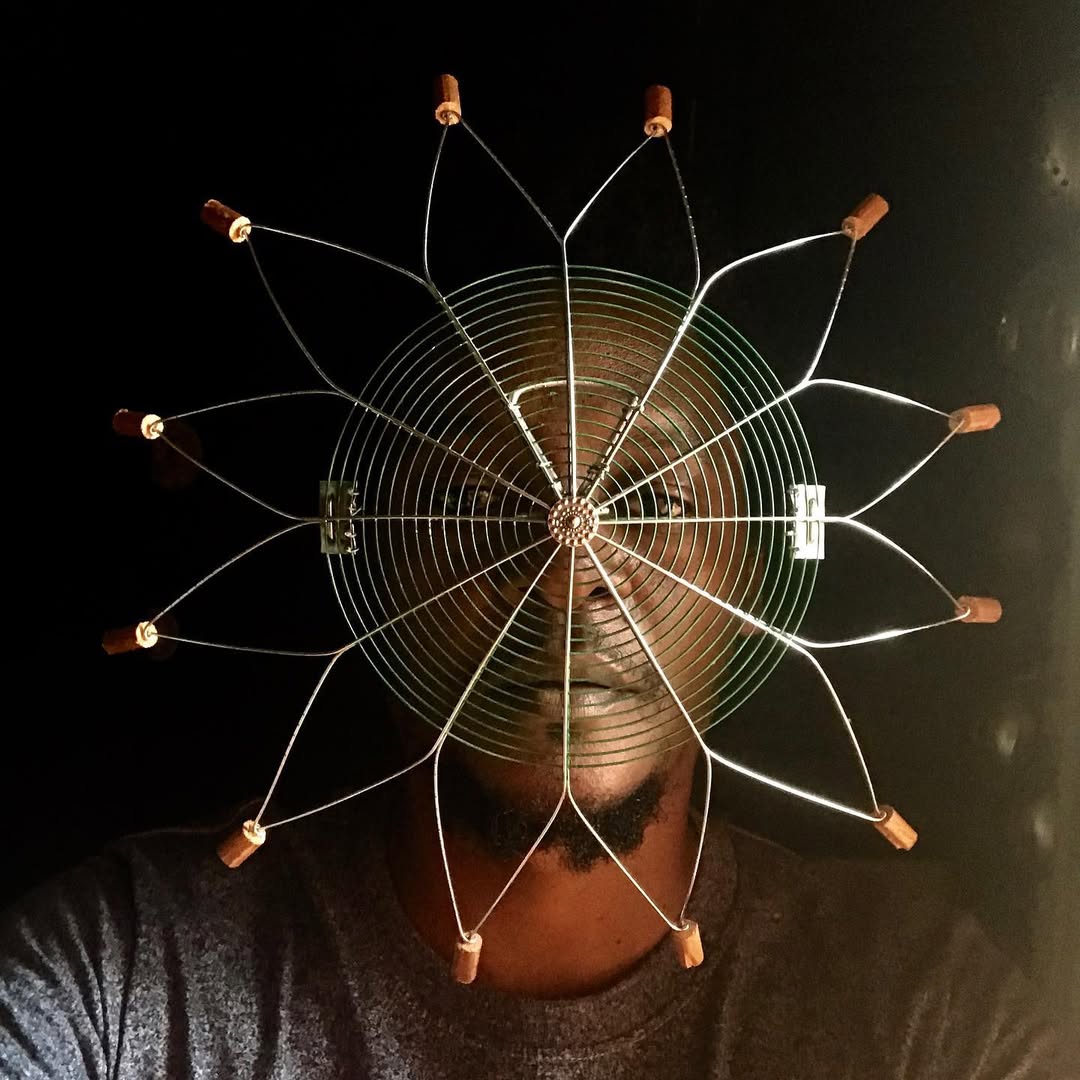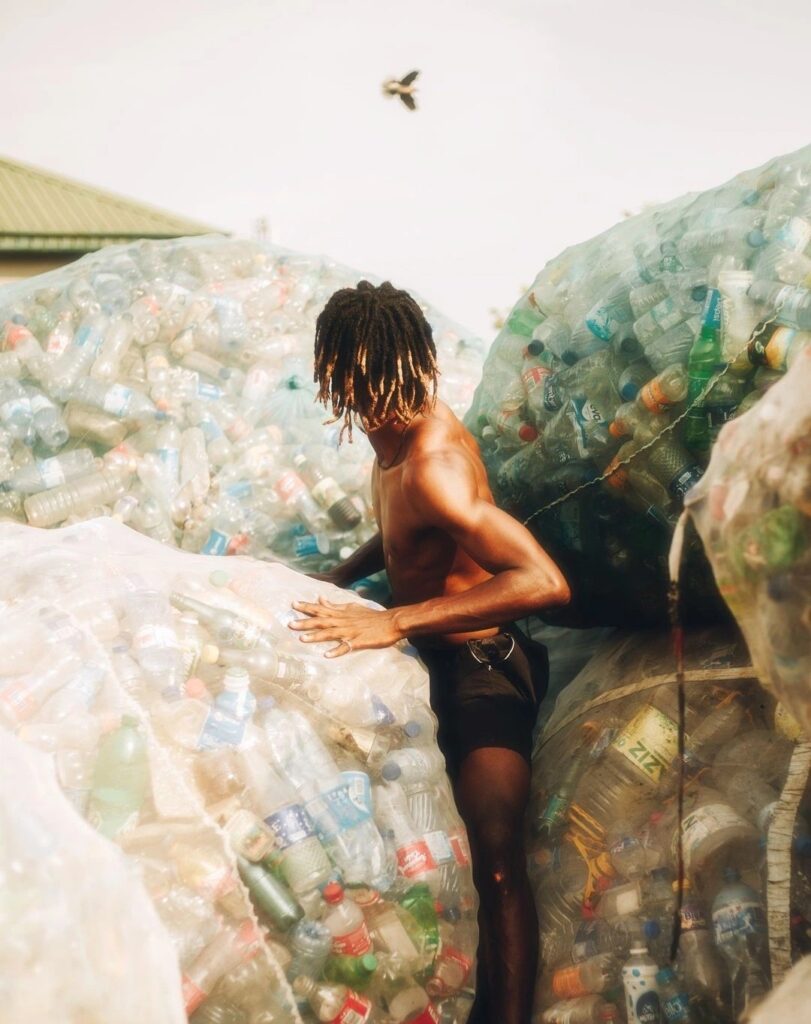
As the global fashion industry reckons with its massive environmental impact, Africa is quietly leading a creative revolution — one where waste is not discarded but reborn. On this World Environment Day, we turn the spotlight to a growing community of African designers and artists transforming textile scraps, plastic, and secondhand clothing into vibrant works of fashion and environmental art. Their work challenges colonial consumption patterns, reclaims cultural craft, and repositions Africa not as a dumping ground — but as the birthplace of regenerative design.
The Hidden Cost of Fast Fashion in Africa
Fast fashion’s affordability masks its destructive reality. Globally, the fashion industry contributes nearly 10% of all carbon emissions and is the second-largest consumer of the world’s water supply. In Africa, the problem is doubly visible. Mountains of secondhand clothes — often low-quality fast fashion rejects — pour into local markets under the guise of charity or “affordable fashion.”
From Kantamanto Market in Ghana to Gikomba in Kenya and Balogun in Nigeria, these so-called “mitumba” markets are inundated with clothes that are often unsellable. The result? A continent burdened with textile pollution, clogged landfills, and strained local textile economies. But instead of becoming victims of waste colonialism, African creatives are turning the tide.
Upcycling as Resistance and Reinvention
In response, a bold new wave of designers and artists across the continent are embracing upcycling — the creative reimagining of discarded materials into new, functional, and often beautiful forms. Whether it’s stitching together remnants of fast fashion, spinning plastic waste into fabric, or elevating recycled gallons into art, these creatives see waste not as failure, but as possibility.
For them, upcycling is more than a trend — it’s a cultural philosophy. It’s rooted in Africa’s ancestral wisdom, where nothing was wasted, everything had a second life, and craft was intertwined with ecology. These designers and artists aren’t just making clothes or art; they’re preserving knowledge, protecting the planet, and proposing a future where sustainability is stylish, soulful, and deeply African.
Designer Spotlights: Innovation Meets Culture
NKWO (Nigeria) — The Textile Waste Innovators

Nigerian designer Nkwo Onwuka is at the forefront of fashion-led sustainability in West Africa. Her eponymous label, NKWO, tackles textile waste head-on through the creation of Dakala cloth, a handmade fabric derived from discarded garments and offcuts.
The result is a textured, earthy material that reconnects with slow fashion ideals and traditional African silhouettes. More than just a material innovation, Dakala is Nkwo’s philosophy: one of healing the planet by returning to the wisdom of our hands. Through her work, she champions circularity, craftsmanship, and quiet rebellion against overconsumption.
Reform Studio (Egypt) — Plastic Pollution Meets Luxury Design

In Cairo, Reform Studio turns one of Egypt’s biggest environmental headaches — plastic bags — into luxury homeware and fashion accessories.
Founders Mariam Hazem and Hend Riad developed Plastex, a handwoven fabric made from reused plastic bags collected from local communities.
Their products, which range from colorful totes to upholstered furniture, are made by local women artisans, creating jobs while cleaning up urban waste. Reform Studio proves that sustainability doesn’t have to be rustic — it can be luxurious, clean-lined, and deeply rooted in local social impact.
Katush (Kenya) — Minimalist Upcycled Chic

Kenyan label Katush, founded by Katungulu Mwendwa, offers a fresh take on Afro-minimalism through upcycled design. Focused on small-batch production and natural fibers, Katush emphasizes circularity not only in materials but also in lifestyle — encouraging consumers to buy less, wear longer, and honor local craftsmanship. Each collection is a thoughtful blend of cultural references and urban functionality, offering wardrobe essentials that align style with sustainability. In Nairobi and beyond, Katush is redefining conscious cool for a new generation of African urbanites.
From Dakar Fabrics (Senegal) — Circular Luxury Meets Ancestral Knowledge

Since 2017, Senegalese designer Moctar Ba, founder and creative director of From Dakar Fabrics, has been redefining sustainable fashion by merging discarded materials with Africa’s rich textile heritage.
The brand uses an inventive palette of recycled plastic bottles, advertising billboards, hotel linens, military tarps, leather scraps, and recycled cotton — a vital intervention in an industry where traditional cotton can consume up to 20,000 liters of water per kilogram. But Ba’s brilliance lies in blending innovation with tradition. His collections incorporate Bogolan (mud cloth) from Mali and Pagne Tissé from Senegal — handmade, plant-dyed textiles that reflect low-impact, ancestral production.
The team operates workshops across Dakar, The Gambia, and Morocco, training artisans in circular design and regenerative thinking. For Ba, sustainability is both a political and poetic act: reclaiming waste, reviving craft, and restoring dignity through conscious design.

Art as Activism: The Afrogallonism Movement
Afrogallonism (Ghana) — Sculpting Plastic into a Cultural Wake-Up Call
Ghanaian artist Serge Attukwei Clottey, founder of the Afrogallonism movement, doesn’t make clothes — he makes statements. His medium? Discarded yellow plastic gallons, once used for transporting water, now strewn across West Africa as markers of environmental neglect.

Serge collects these gallons and assembles them into powerful installations, masks, and performance art pieces that speak to waste, migration, and survival. His work is rooted in Accra’s streets but resonates globally, pushing audiences to confront the environmental cost of convenience and inequality.
Afrogallonism doesn’t wear sustainability — it performs it. And in doing so, it bridges art and activism in a deeply African language of transformation.
Beyond the Runway and Gallery: Community as Catalyst
What unites these creatives is more than just aesthetics — it’s a shared belief in community-led change. Many of them work directly with local artisans, train youth in sustainable practices, and build economies around ethical, regenerative production.
Their work tells us that climate action doesn’t always come from the top down. It can come from the neighborhood tailor reworking old jeans, the weaver dyeing fabric with leaves, or the artist collecting discarded gallons to speak truth to power.
These innovators are not just designing clothes or sculptures — they are designing systems for survival.
Reclaiming Waste, Reclaiming Power
On this World Environment Day, the message from Africa’s fashion and art world is clear: waste is not the end — it’s the beginning.
In the hands of these visionaries, waste becomes a tool for cultural revival, environmental healing, and global reeducation. Their work calls on the world to unlearn fast fashion, rethink “waste,” and reimagine what luxury, heritage, and sustainability can truly mean.
Africa is not just participating in the circular economy — it’s shaping its soul.
So whether you wear it, walk past it, or witness it — remember: what you discard.
As consumers, influencers, and industry insiders, it’s time to listen, learn, and embrace the beauty and potential of waste turned wealth — in fabric, plastic, and beyond.
